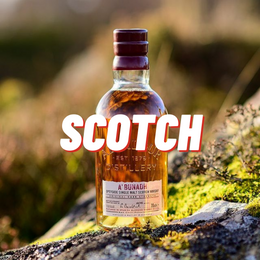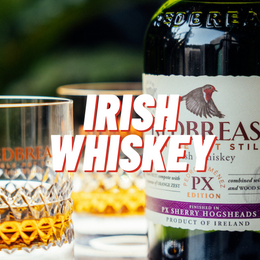
What the heck is that?

The Isle of Islay (pronounced “EYE-le”) is the southernmost island of an archipelago known as the Inner Hebrides, lying off the west coast of Scotland. The landscape is windswept and craggy, the climate rugged.

Between the 9th to 13th century, the Hebridean archipelago was ruled as the “Kingdom of the Isles” by powerful sea-faring Norse peoples. Islay was the King of the Isles' seat of power. The Kingdom nominally pledged loyalty to Norway, Ireland or Scotland, but in reality might have been more powerful than any of these countries.
From Glasgow, one could take a direct flight into the island. Yet most prefer to get there by sea so as to fully soak in the salty air and seascape of the island. Today, the isle has a population of only about 3,000 inhabitants.
Who cares?
Islay is said to be the spiritual home of Scotch whisky. According to some records, Irish monks settled on the island in the 1300s and carried with them the art of spirit distillation. Other records suggest that distillation was brought in from Ireland by the Beaton medical dynasty – a clan of hereditary physicians (yes, there was such a thing) who for generations served kings of Scotland and the Lords of Islay. Someway or another, the Irish were involved.

The ancient kings are long gone but in their place stand new Lords of the Isle. You cannot escape the powerful smoke and salt in Islay malts. Islay distilleries are known for their iconic smoky, peaty and oceanic style of whisky that often possess notes of barbecued meats, seaweed, oysters and black pepper. There are currently 9 distilleries in operation on Islay – all of them set along the windy coast of the Island. This figure would soon be 10 as Port Ellen Distillery springs back into life in time to come.
Why should I care? What is one thing to take away?
Islay whiskies have always been big on romanticism and glamour. The coastal distilleries are set by violent, energetic waves from the North Atlantic, while the barrels of whisky are aged by the salty maritime air. This picture, together with every smoky, briny dram, is highly evocative of the terroir of Islay malts.
Islay whiskies tend to make no apology for their intensity. The iconic peatiness is sometimes an acquired taste – the more often you drink them, the more you are likely to appreciate them.
First-time drinkers might really enjoy a Bunnahabhain (“BOO-na-ha-ven”), one of the most subtle of the Islay malts with a pleasant oily texture, notes of dried apricots and a very refined Oolong-tea smokiness. Those who wish to go all the way on first date should grab themselves an iconic Lagavulin – this one carries more intensity but artfully balances heavy elements of smoke and iodine on one hand, with rich and creamy notes of sweet wine and red fruits on the other.







